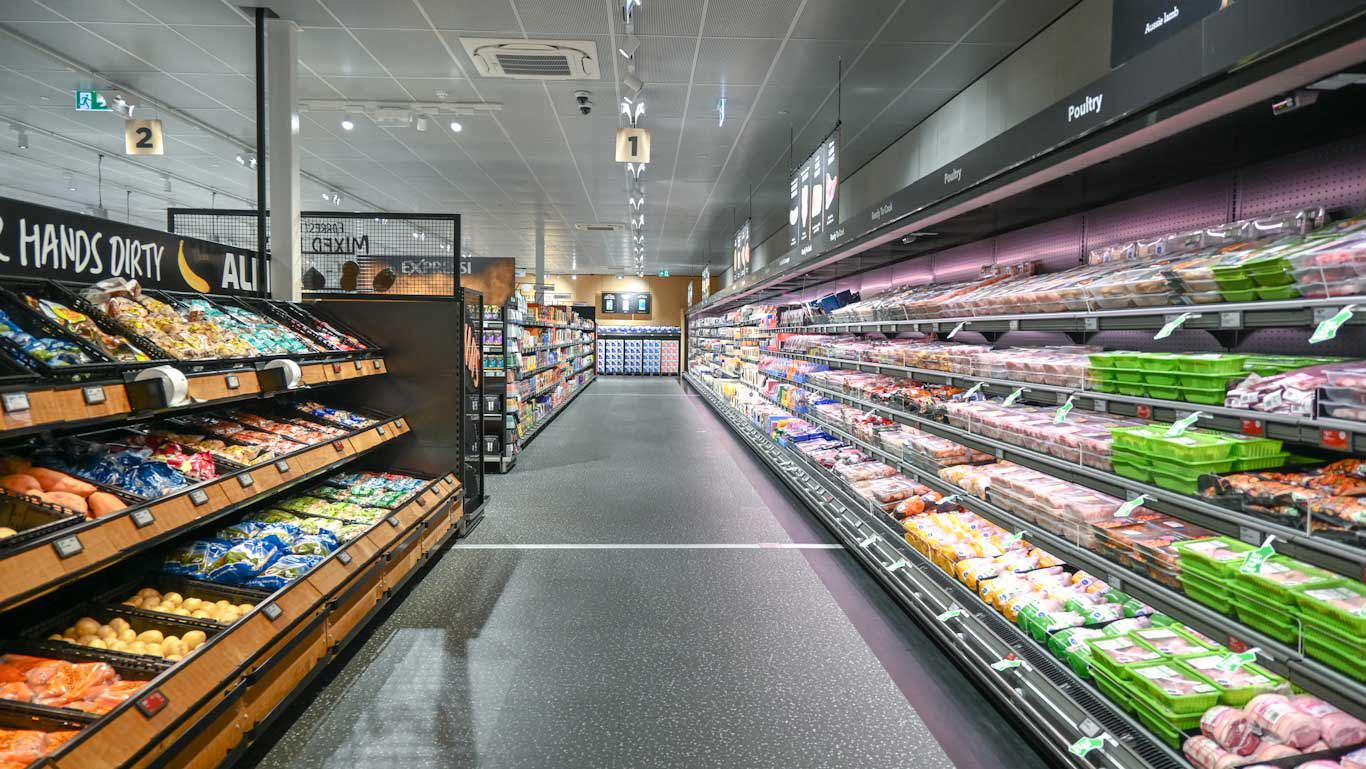
If you’ve been shivering through this week’s winter cold snap then stepping inside a supermarket isn’t likely to bring you much relief.
That’s because the air temperature of Australian supermarkets can often be just as frigid as the current wintry conditions outside, with the meat aisle of one Sydney Aldi store measuring just 13.1 degrees this week.
It’s what is known as the “arctic aisle effect”, where rows of open fridges housing chilled products like meat and dairy produce flows of cold air that waft around the store, leaving customers to clutch at their winter woolies.
READ MORE: Inflation rises on track with expectations, easing fears of rate hike
While the big three supermarkets chains – Woolworths, Coles and Aldi – have all made some moves recently to address the phenomenon and increase energy efficiency, there could be at least one good reason they have waited so long to act, experts say.
Jana Bowden is a professor of marketing and consumer psychology at Macquarie University’s business school.
Rather than putting doors on all of its refrigerated sections, supermarkets had traditionally relied on fan technology to shift cold air around their stores and even out the temperature, Bowden said.
However, this strategy was not always effective, she added.
“For those stores without adequate fan tech in place consumers … aisle temperatures of 7-10 degrees are not uncommon,” she said.
While uncomfortable for customers, the frigid temperatures could have a positive impact on supermarket profits by affecting what types of food we buy, Bowden said.
“There is some evidence that suggests that some chill is ‘good chill’,” she said.
“If consumers are slightly cooler when shopping then the research says that decision making tends to become more emotionally driven rather than rational and this increased spend.”
READ MORE: ‘Changes’ to Rex workforce flagged as hundreds of job losses feared
Professor Nitika Garg, from the University of NSW Business School, has conducted research into how the weather impacts people’s preference for unhealthy foods.
While it was unlikely the supermarket giants were keeping store temperatures low as part of a sophisticated ploy to increase our spending at the checkout, it could well be an unintended side-effect, Garg said.
“What we found consistently is that during bad weather conditions – when it’s cold or rainy, people tend to gravitate towards unhealthy consumption,” she said.
“So in weather like this week in Sydney, people will definitely go for comfort food or hedonic foods, like chocolate, etc.”
Women appeared to be more susceptible than men to having their emotions affected by the weather and, in turn, their consumption patterns, Garg said.
“I don’t know what the split is right now in our society relating to women versus men shoppers for households, but if more women are shopping, then probably it’s not a good thing,” she said.
“This could have repercussions for family health.”
Allowing supermarket temperatures to drop too low, however, risked putting off customers altogether, Bowden said.
“If we feel frozen solid then there’s a clear negative effect,” she said.
“Cold consumers means reduced dwell time in front of shelves, and decreased spend as consumers feel like they want to hightail it out of there.”
Which supermarkets are the coldest?
9news.com.au used a digital indoor air thermometer to measure the temperatures inside three random Woolworths, Aldi and Coles stores in Sydney this week.
Aldi’s Thornleigh store, on Sydney’s upper north shore, was the coldest of the three supermarkets tested.
The temperature was a frigid 13.1 degrees in the meat and dairy aisle, and not much higher at 14.4 degrees in the middle “Special Buys” aisle.
Earlier this year, in a bid to increase energy efficiency, Aldi trialled adding doors to its fridges in some NSW stores, including its North Rocks supermarket in Sydney’s north west.
ALDI is now trialling the addition of chiller doors in 20 stores across Victoria, Queensland, and Western Australia.
However, Aldi is yet to add any doors to its fridges in its Thornleigh store. Its open air meat and dairy section, combined with the store’s relatively small footprint, are all factors contributing to its high-chill factor.
In contrast, the Coles store tested by 9news.com.au in Walker St, North Sydney has been recently remodelled and, as part of the renovation, doors were added to almost all refrigerated sections, including dairy and meat.
As a result, the temperature in most areas of the store was fairly consistent at 17.1 degrees. The temperature dropped only slightly to 16.6 degrees in one aisle with an open fridge for fruit and vegetables.
“Doors have been added to every fridge in new Coles stores across most categories,” a Coles spokesperson said.
“This initiative reduces our refrigeration energy consumption by more than 20 percent, helps to maintain and extend food quality and reduce waste.”
Coming in the middle temperature range was Woolworths in Thornleigh, where the open-air dairy and meats aisles measured 14.5 degrees and the middle grocery aisles measured 16.6 degrees.
“Since 2015, we’ve been trialling doors on our fridges to help reduce emissions,” a Woolworths spokesperson said.
“We know this simple act alone can cut electricity consumption by up to 30 per cent. All new and recently renovated stores are currently fitted with doors for all dairy and almost all meat fridges.”
All of Aldi’s Australian operations are powered with 100 percent renewable energy. Both Coles and Woolworths have pledged to do the same by 2025.
Contact reporter Emily McPherson at emcpherson@nine.com.au
links to content on ABC
9News





